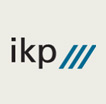From A for agenda setting to Z for target group analysis - as communicators we deal with many aspects of communication.
It is therefore all the more important to know the most important terms and to use them correctly.
Agenda-setting: PR professionals at the steering wheel of the information flow: Through skilful topic selection and placement, communication experts steer what the public perceives and discusses.
Branding: Like a distinctive tattoo for a company. It is the process of creating and maintaining a unique image that sets a company apart from the competition.
Clipping: The evidence of communication success: Whether print evidence, radio reports, online articles or television broadcasts – clippings give communication professionals an overview of what has been published in the media.
Digital PR: PR in the virtual world, a high-wire act in social media and online platforms that helps spread a company’s brand message.
Earned Media: The hard-earned gold medal in PR: Earned media is any content (articles, guest commentaries, interviews, etc.) that is published in the media about a company, brand or product free of charge.
Filter Bubble: Through certain algorithms, internet users are only shown “filtered” results. The filter results from local and social data that are collected, for example, through cookies. Certain information is thus excluded for users who do not consciously search for it. Search engine advertising, Facebook ads or affiliate marketing use this principle.
Gatekeepers: Editors and media are the gatekeepers of the information world. They decide what information is worth passing on to the public.
Header: Header means something like “header” or “title” and is used in many types of texts in the PR world (press releases, invitations, guest comments, etc.). It refers to the header of the document, which should attract the attention of the readers.
Influencer relations: The dance with digital celebrities. The advantage of influencers is that they have a large fan base that trusts them. With this ingredient and a pinch of hype, sales of a product are guaranteed through so-called “influencer marketing”.
Journalist contact: A basic tool in the PR toolbox that includes dialogue and relationship building with media representatives.
Crisis prevention: The emergency kit for every company. This PR sub-process focuses on identifying potential crises and making plans to avoid or minimise them.
Litigation PR: Litigation-related public relations is a form of reputation management that involves managing external communications before, during and after legal disputes.
Media Monitoring: The surveillance cameras of the information space. This process involves the systematic monitoring and analysis of media content to measure a company’s presence and impact.
Newsjacking: The art of jumping on the news trend bandwagon. This means relating your own stories to current news and launching them to increase the visibility of your own brand.
Owned Media: A company’s own media playground includes all corporate communication channels such as websites, blogs or social media, which are used for the company’s own content. The advantage is full control, the disadvantage is credibility.
Press spokesperson: The voice of a company. They are responsible for communicating the company’s message clearly and consistently to the public and the media.
Qualitative and Quantitative Research: The magnifying glass and binoculars of PR. Both help to understand and measure audience trends in order to develop targeted and effective communication strategies.
Returns: This refers to mails, usually after a press release has been sent to journalists, that have been returned due to undeliverability or unreachability. An important task is to sift through the returns, enter new contacts into the database or delete outdated ones.
Storytelling: The magic trick of the PR world. By telling stories, complex messages can be conveyed in a comprehensible and emotionally effective way.
Tonality: Every text has its own tone. The text style must be adapted according to the industry and company: What words and terminology do we use? You or you? Can the text be relaxed and humorous or must it remain rather factual? These are all important details that determine the right tone for each customer.
User Generated Content (UGC): When the audience enters the stage. UGC refers to content created by users and not by the company, such as reviews, photos or videos.
Distribution list: The distribution list is THE instrument in PR when it comes to public relations. All important contacts to the media and multipliers are entered in a database. Depending on the sector and topic of a media activity, the appropriate journalists are selected who are interested in the information you want to convey.
Wording: The choice of words is the key to success in PR. Wording involves the careful selection of words and phrases to evoke the desired emotions and reactions.
X-Factor: That certain something in PR. The X-factor is what makes a company or brand unique and stands out from the crowd 😉
Year-End Summary: The PR time travel at the end of the year. This is an overview or report that summarises the achievements, successes and highlights of the past year and is often used as a communication tool to strengthen relationships with stakeholders.
Target group analysis: Understanding the target group is like deciphering a secret code. It helps to understand the needs, wants and preferences of the target group in order to communicate effectively with them.
Could we arouse your interest in strategy? Click here to find out more about our services.











